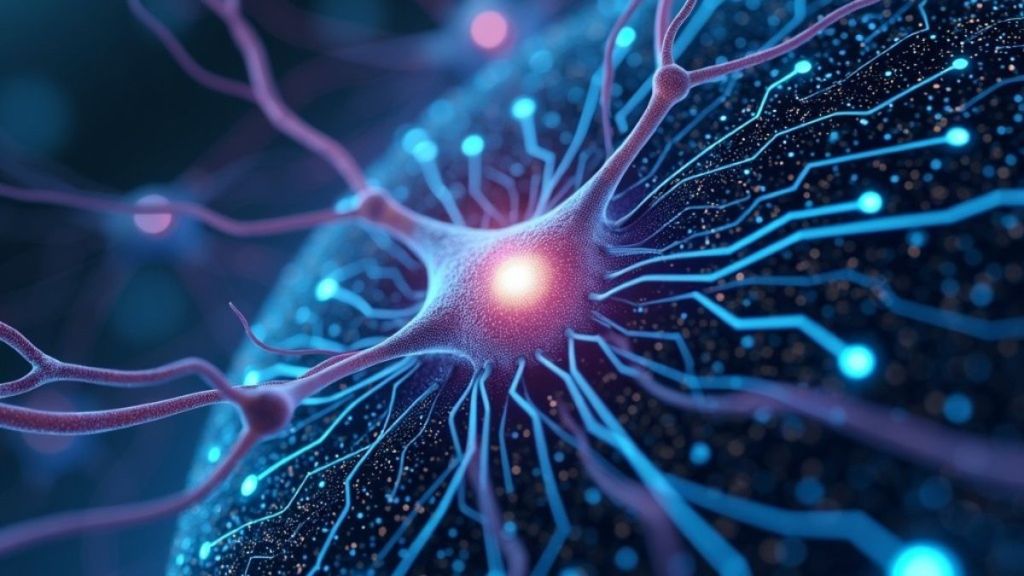By Anil Nair
Humanware for computing—with artificial intelligence (AI) becoming a dominant topic of discussion, it was just a matter of time before men of science decided that human brain cells could serve us better than silicon chips.
Earlier this year, Melbourne start-up Cortical Labs launched CL1, merging stem-cell derived neurons with silicon, thus introducing synthetic bio-intelligence. This hybrid system promises to adapt and learn faster, while consuming substantially less energy than silicon-based AI. Founder and CEO Dr Hon Weng Chen explained, “We take blood or skin and transform them into stem cells, into neurons, and then use them for compute and intelligence.”
At Vevey, Swiss start-up FinalSpark Co-founder Fred Jordan firmly believes that in time, brain cells will replace the chips powering AI. “Instead of trying to mimic,” he says “let’s use the real thing.” That makes sense for two stand-out reasons—one, that neurons can be reproduced endlessly in the labs; and two, that these bio processors will be a million times more energy efficient, addressing major concerns around chip and power availability and cost. (FinalSpark’s website even has a live feed of neurons at work!).
So, what is wetware? It is the organic neural substrate that processes thought, imagination, and decisioning. It is the biological component in what is now emerging as a computing triad, the other two being hardware and software. It marks the beginning of the world seeing what researchers realised a while ago.
That the brain is more than an organ; it is an information processor, a gigantic parallel processor with around 86 billion neurons, clearly superior to silicon in respect of emotional intelligence and intuition. Contemporary deep learning borrows from the brain’s layered architecture, but is still critically short on self-awareness and consciousness.
The most visible embodiments of wetware are brain computer interfaces (BCIs), which translate organic signals from neural activity into machine-readable digital commands—like controlling a prosthetic limb with the mind. By extending human cognition into the digital realm, the BCI is already changing the paradigm substantially in respect of health, communication, and mobility. Human wetware is progressively becoming a node in an integrated computing network. And we will soon see hybrid architectures co-processing information in real time.
However, cognitive customising and enhancement forces us to figure what is “normal” and whether there is equivalence with enhancements of different kinds—organ transplants or plastic surgery. There is also the matter of who owns neural data, the ownership of thoughts, and if mental privacy is as important as data privacy, or more.
Bio-cybersecurity: And then there’s neural hacking, lurking at the dark edge of this connectivity and cognition canvas, introducing us to a new chapter in cyber risk—the hacking of biological data generated by the brain, including emotions, intentions, and memories. Imagine if the human brain can be read and altered, surveillance, coercion, and influence can be exerted at a level far beyond mere digital profiling.
And as applications widen to include communication, authentication, and gaming, the threat surface expands exponentially. Governments are now forced to look at neurosecurity with different eyes, as securing the mind becomes far more complex than securing the cloud or infrastructure. The European Union Ethics Board and the US National Science Foundation are already contemplating neurorights.
Societal frameworks, the law, and the education system have to be rewired to stay relevant. Legal systems will be challenged as we debate aspects relating to ownership of neural data, consent to mental monitoring and liability in respect of actions under augmented cognition.
Education systems will have to rethink their purpose and relevance as the emphasis shifts to next-level critical thinking, ethical reasoning, and contextual judgement. Institutions of learning will have to produce neuro-engineers, bioinformatic lawyers, cognitive ethicists, and system architects of a different ilk. Societal frameworks will also have to address how to provide equitable access to avoid the neural divide, because cognitive augmentation could well become a privilege of wealth.
There are many interesting entities in this space. Neuralink, founded by Elon Musk in 2016, is focused on thought-based device control through implantable hi-bandwidth brain chips. As their approach is invasive, safety, ethical, and regulatory trade-offs are inevitable.
Synchron has a “stentrode” device, implanted via blood vessels, which doesn’t need open brain surgery. Aimed at people with paralysis or serious motor impairment, they have moved into the human trials stage. Precision neuroscience, founded by Neuralink alumni, is aiming at treating paralysis and stroke patients with minimally invasive thin-film electrode rays. These diverse approaches are expanding the market beyond addressing neurodegeneration enhancement.
Investors see neurotech as the next deep-tech frontier and investments have been pouring in since 2023. Illustratively, OpenAI’s Sam Altman just announced the creation of Merge Labs, onboarding Mikhail Shapiro, an award-winning biomolecular engineer in his founding team.
Is this a civilisational inflection point? It may well be, with the human mind evolving into a programmable, networked entity, with the clear divide between man and machine, between human cognition and machine computation, slowly disappearing.
While computing with minimal energy consumption is an alluring beginning considering the gargantuan global scale, and as thought circuitry merges with machine circuitry, humanity will have to revisit a fundamental, unwritten contract—the one between, man, machine, science, and society. Because the great divide of the future will be cognitive.
The writer is founder of ThinkStreet.
Disclaimer: Views expressed are personal and do not reflect the official position or policy of FinancialExpress.com. Reproducing this content without permission is prohibited.

